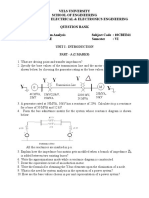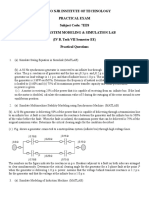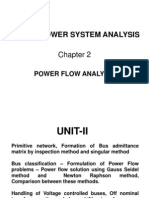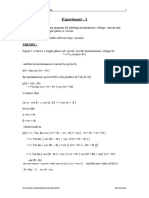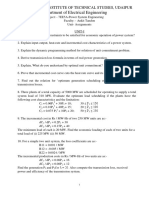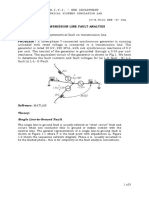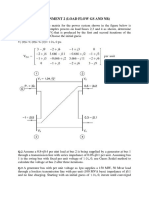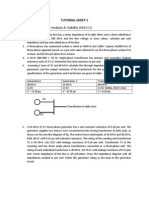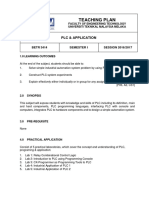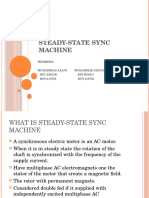0% found this document useful (0 votes)
443 views5 pagesPower System Analysis Tutorial
This document contains 5 tutorial questions related to power flow analysis using the Newton-Raphson and Gauss-Seidel methods. Question 1 involves determining the initial mismatches and Jacobian elements for a 2-bus system. Question 2 involves defining bus types, calculating voltages using Gauss-Seidel, and explaining Newton-Raphson. Question 3 uses Newton-Raphson to solve a 3-bus system with different bus types. Question 4 applies Gauss-Seidel to a 2-bus system. Question 5 uses Newton-Raphson to iterate on a solution for another 2-bus system.
Uploaded by
Aza NiCopyright
© © All Rights Reserved
We take content rights seriously. If you suspect this is your content, claim it here.
Available Formats
Download as DOCX, PDF, TXT or read online on Scribd
0% found this document useful (0 votes)
443 views5 pagesPower System Analysis Tutorial
This document contains 5 tutorial questions related to power flow analysis using the Newton-Raphson and Gauss-Seidel methods. Question 1 involves determining the initial mismatches and Jacobian elements for a 2-bus system. Question 2 involves defining bus types, calculating voltages using Gauss-Seidel, and explaining Newton-Raphson. Question 3 uses Newton-Raphson to solve a 3-bus system with different bus types. Question 4 applies Gauss-Seidel to a 2-bus system. Question 5 uses Newton-Raphson to iterate on a solution for another 2-bus system.
Uploaded by
Aza NiCopyright
© © All Rights Reserved
We take content rights seriously. If you suspect this is your content, claim it here.
Available Formats
Download as DOCX, PDF, TXT or read online on Scribd
/ 5
